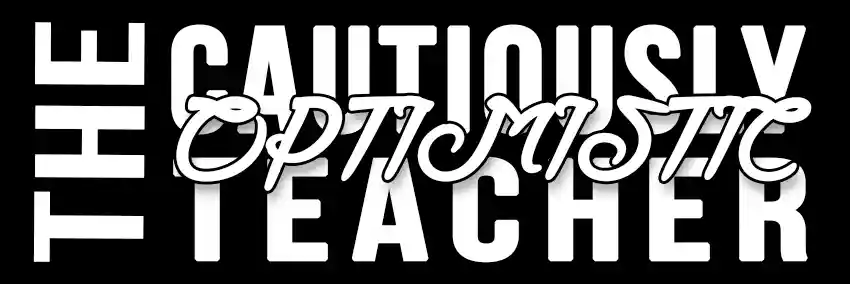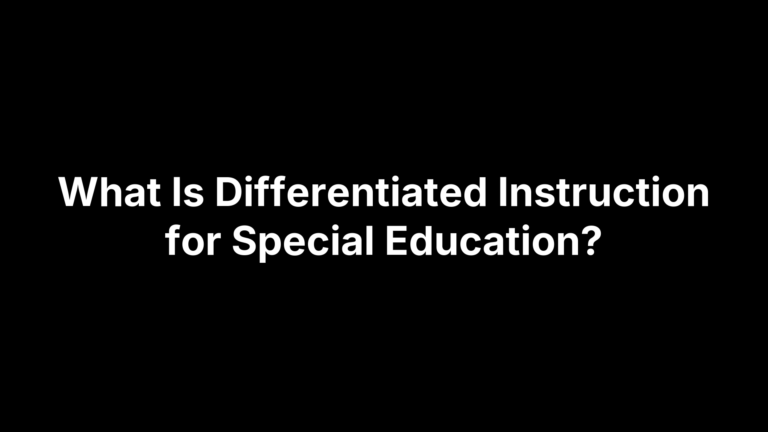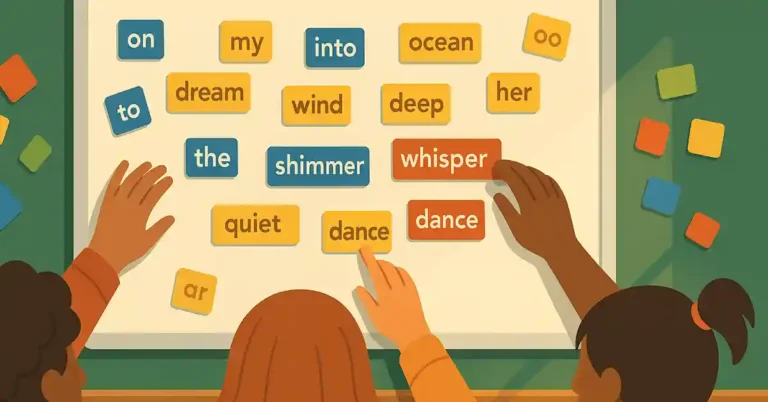Incredible Advantages of Individualized Homework Assignments
As a teacher, I’ve often been challenged by the diverse range of learning styles, abilities, and interests in my classroom. This diversity isn’t a problem—it’s a beautiful testament to the uniqueness of each student. But it does raise a question: how can we best cater to these individual needs, especially when assigning homework? Enter the magic of Differentiated Homework Assignments.
Introduction
What are Differentiated Homework Assignments?
Imagine crafting homework tasks that resonate with each student, not just a few. Differentiated Homework Assignments do just that. They are tasks designed specifically to match the diverse needs, interests, and abilities of our students. Instead of the one-size-fits-all approach, these assignments are tailored, ensuring every student has a meaningful and engaging learning experience outside the classroom walls.
Why is Catering to Individual Needs Crucial?
Do you recall that student who always seemed disengaged when it came to homework? Or the one who breezed through it, finding no challenge? These are clear signs that a single type of assignment isn’t fitting all. By catering to individual needs, we don’t just make homework more engaging—we make it relevant. When students see the relevance in what they’re doing, they’re more likely to be motivated, to put in the effort, and to truly grasp and retain the concepts we’re trying to teach. Additionally, by recognizing and attending to each student’s unique needs, we’re sending a powerful message: “I see you, I understand you, and you matter.”
As educators, our ultimate goal is to inspire a love of learning and to provide our students with the tools they need to succeed. Differentiated Homework Assignments are an invaluable tool in this quest. As we delve deeper into this topic, I invite you to join me on this journey of exploration, understanding, and, ultimately, transformation in the way we approach homework.
The Theoretical Foundation Behind Individualized Homework
The journey of differentiated homework isn’t just a modern trend—it’s deeply rooted in the annals of educational history and theory. To truly grasp its importance, it’s essential to understand the foundation that led us to this revolutionary approach.
Brief History and Origins
The concept of individualized instruction isn’t new. Long before formal schools existed, learning was individualized. Think about it: during ancient times, mentors and apprentices worked one-on-one, focusing on the unique strengths and needs of the learner. As structured educational systems emerged and classrooms began to fill, the challenge became apparent: How do you cater to diverse learners in a collective setting?
In the early 20th century, educators began revisiting the idea of individualization. The Progressive Education Movement, led by luminaries like John Dewey, championed the idea that education should be tailored to individual students rather than standardized for all. By the late 20th century, with the advent of technology and a deeper understanding of cognitive psychology, differentiated instruction began gaining momentum, eventually making its mark in homework practices.
Relevant Educational Theories and Principles
Several educational theories bolster the idea of Differentiated Homework Assignments:
Constructivism – Spearheaded by Piaget and Vygotsky, this theory posits that learners construct knowledge based on their experiences. Individualized homework caters to these unique experiences, ensuring each student can connect new knowledge to what they already know.
Multiple Intelligences – Howard Gardner’s groundbreaking theory suggests that there are various types of intelligences (like linguistic, logical-mathematical, and kinesthetic, to name a few). Differentiated assignments can target these diverse intelligences, allowing students to leverage their strengths.
Zone of Proximal Development (ZPD) – Vygotsky’s ZPD refers to the sweet spot between what a student can do alone and what they can achieve with guidance. Tailored assignments can fit into each student’s ZPD, ensuring they’re consistently challenged but not overwhelmed.
Maslow’s Hierarchy of Needs – At the heart of this theory is the belief that unless basic needs (like feeling safe and valued) are met, individuals can’t reach their full potential. By recognizing and catering to each student’s unique needs through individualized assignments, we’re also addressing their psychological and emotional needs, paving the way for higher academic achievement.
In essence, the path towards differentiated homework assignments isn’t just a pedagogical shift—it’s a return to the very roots of effective teaching. Recognizing each student as an individual, with unique talents, experiences, and needs, allows us to create a more inclusive, engaging, and effective learning environment.
Advantages of Differentiated Homework Assignments

One might wonder, with the plethora of teaching strategies and approaches available, why should differentiated homework take precedence? The answer lies in the myriad of benefits that this tailored approach brings not only to our students but also to the overall learning environment.
Personalized Learning Paths
Catering to Different Learning Styles: We’ve all encountered students who grasp concepts through visuals, while others need a hands-on experiment, and still, others thrive through auditory means. By tailoring homework assignments to fit these varied learning styles, we’re not just making tasks easier—we’re making them resonate.
Adjusting Complexity Based on Student Capability: Remember that bright-eyed student who could solve complex problems with ease and the other who struggled with basics? Differentiated assignments allow us to challenge the former while providing foundational support to the latter, ensuring both grow from where they are.
Relevant Assignments Leading to Greater Interest: When students find relevance in their homework—a connection to their lives, interests, or passions—they are naturally more inclined to engage. No longer is homework a chore; it becomes a journey of discovery.
Direct Correlation with Improved Academic Outcomes: It’s simple: Engaged students learn better. As they find interest and value in tailored assignments, their academic performance skyrockets. It’s a win-win!
Boost in Confidence & Self-Esteem
Mastery at Individual Pace: Differentiated assignments allow students to master topics at their own pace. Slow and steady or swift and agile, every student’s pace is honored, ensuring genuine understanding over rote memorization.
Celebrating Individual Achievements and Progress: As each student progresses on their unique path, their achievements—big or small—can be celebrated. This not only boosts their self-esteem but fosters a love for learning.
Higher Quality of Work
Tailored Assignments Yield Deeper Insights: When assignments resonate with a student, they delve deeper, offering richer insights and showcasing a deeper understanding of the topic at hand.
Reducing Generic Responses and Promoting Critical Thinking: Gone are the days of cookie-cutter answers! With assignments that challenge and engage, students are prompted to think critically, fostering a culture of innovation and problem-solving.
Challenges & Solutions of Differentiated Homework Assignments
While the merits of differentiated homework assignments are undeniable, it’s equally important to acknowledge the potential challenges that come with this approach. More crucially, as educators, we need to be equipped with strategies to navigate these challenges effectively.
Potential Pitfalls of Differentiated Homework
Increased Planning Time: Tailoring assignments to cater to individual student needs can be time-consuming. The planning required is undoubtedly more than the traditional one-size-fits-all approach.
Possibility of Perceived Unfairness: Students might perceive differentiated assignments as “easier” or “harder,” leading to feelings of inequity in the classroom.
Managing Multiple Assignments: Tracking various tailored assignments for each student can become a logistical challenge, especially in larger classes.
Ensuring Consistency in Evaluation: With varied assignments come varied answers. Assessing and grading diverse responses while maintaining consistency can be challenging.
Strategies to Overcome Common Challenges
Utilize Technology: Leverage educational software and platforms that aid in crafting and managing differentiated assignments. Platforms with built-in analytics can also help in tracking individual student progress.
Transparent Communication: Openly discuss the rationale behind differentiated homework with students. When they understand that tasks are designed to cater to their unique needs and strengths, they’re less likely to feel the system is unfair.
Collaborative Efforts: Collaborate with fellow educators to share resources, ideas, and strategies. A collective effort can significantly reduce planning time and yield a repository of diversified tasks.
Rubric-Based Evaluation: Create clear, detailed rubrics that provide guidelines for evaluating varied assignments. Sharing these rubrics with students can also provide clarity on what’s expected and how they’ll be assessed.
Seek Feedback & Adjust: Regularly solicit feedback from students about the assignments. This not only gives insights into what’s working but also fosters a sense of involvement and ownership among students.
The Future of Individualized Homework in Education

The trajectory of modern education is clear: a move towards greater personalization and customization. As classrooms become more diverse, both culturally and in terms of learning preferences, the need for differentiation becomes paramount. Schools and educational institutions are likely to invest more in tools, training, and methodologies that make differentiation not just an option but the norm.
Moreover, with the rapid advancements in artificial intelligence and machine learning, the potential for hyper-personalized learning experiences, which adapt in real-time to a student’s needs, is just around the corner. Imagine a world where assignments not only cater to a student’s academic proficiency but also to their mood, interest spikes, and real-world events. That’s the promise the future holds.
Encouragement for Educators
To my fellow educators, the journey to differentiation might seem daunting. The challenges are real, but so are the rewards. Every time a student’s eyes light up because they “get it” every time a previously disengaged learner shows enthusiasm, you’ll know it’s worth it.
Differentiated homework is more than just assignments; it’s a philosophy. It’s about recognizing that each student who walks into our classroom is unique, with their dreams, strengths, and challenges. Our role, then, is not to teach to the median but to reach out to every individual, ensuring they feel seen, understood, and catered to.
So, I urge you to take the leap. Start small if you must. Experiment with a single lesson, a single class. Use the tools and resources we discussed, lean on your community of educators, and most importantly, trust in your expertise and intuition.
Further Reading
Wormeli, R. (2007). Differentiation: From Planning to Practice, Grades 6-12. Stenhouse Publishers.
“Personalized Learning at Its Best“. Edutopia.







